Gut-innervating nociceptors regulate the intestinal microbiota to promote tissue protection
- PMID: 36240781
- PMCID: PMC9617796
- DOI: 10.1016/j.cell.2022.09.008
Gut-innervating nociceptors regulate the intestinal microbiota to promote tissue protection
Abstract
Nociceptive pain is a hallmark of many chronic inflammatory conditions including inflammatory bowel diseases (IBDs); however, whether pain-sensing neurons influence intestinal inflammation remains poorly defined. Employing chemogenetic silencing, adenoviral-mediated colon-specific silencing, and pharmacological ablation of TRPV1+ nociceptors, we observed more severe inflammation and defective tissue-protective reparative processes in a murine model of intestinal damage and inflammation. Disrupted nociception led to significant alterations in the intestinal microbiota and a transmissible dysbiosis, while mono-colonization of germ-free mice with Gram+Clostridium spp. promoted intestinal tissue protection through a nociceptor-dependent pathway. Mechanistically, disruption of nociception resulted in decreased levels of substance P, and therapeutic delivery of substance P promoted tissue-protective effects exerted by TRPV1+ nociceptors in a microbiota-dependent manner. Finally, dysregulated nociceptor gene expression was observed in intestinal biopsies from IBD patients. Collectively, these findings indicate an evolutionarily conserved functional link between nociception, the intestinal microbiota, and the restoration of intestinal homeostasis.
Keywords: IBD; TRPV1(+) nociceptor; intestinal damage and inflammation; intestinal microbiota; neuron-microbiota crosstalk; substance P; tissue protection.
Copyright © 2022 Elsevier Inc. All rights reserved.
Conflict of interest statement
Declaration of interests D.A. has contributed to scientific advisory boards at Pfizer, Takeda, and the KRF.
Figures
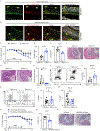
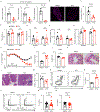

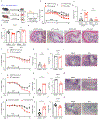
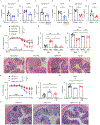

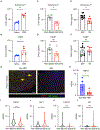
Comment in
-
Adding data to gut feelings.Cell. 2022 Oct 27;185(22):4046-4048. doi: 10.1016/j.cell.2022.10.002. Cell. 2022. PMID: 36306732
-
Pain-sensing neurons calm the gut.Nat Rev Immunol. 2022 Dec;22(12):716. doi: 10.1038/s41577-022-00808-y. Nat Rev Immunol. 2022. PMID: 36357704 No abstract available.
-
Gutsy sensations modulate intestinal disease.Trends Immunol. 2023 Jan;44(1):1-3. doi: 10.1016/j.it.2022.11.007. Epub 2022 Dec 8. Trends Immunol. 2023. PMID: 36503685
-
A triplex for intestinal protection: Neurons, microbes, and goblet cells.Immunity. 2022 Dec 13;55(12):2228-2230. doi: 10.1016/j.immuni.2022.11.006. Immunity. 2022. PMID: 36516817
-
Nociceptive Nerve-Microbiota Cross-Talk During Inflammation: Trying to Restore Intestinal Homeostasis.Gastroenterology. 2023 May;164(6):1018-1019. doi: 10.1053/j.gastro.2022.12.037. Epub 2023 Jan 3. Gastroenterology. 2023. PMID: 36608715 No abstract available.
References
-
- Ansaldo E, Farley TK, and Belkaid Y (2021). Control of Immunity by the Microbiota. Annu Rev Immunol 39, 449–479. - PubMed
-
- Atarashi K, Tanoue T, Oshima K, Suda W, Nagano Y, Nishikawa H, Fukuda S, Saito T, Narushima S, Hase K, et al. (2013). Treg induction by a rationally selected mixture of Clostridia strains from the human microbiota. Nature 500, 232–236. - PubMed
Publication types
MeSH terms
Substances
Grants and funding
- R01 AR077007/AR/NIAMS NIH HHS/United States
- R01 AR070116/AR/NIAMS NIH HHS/United States
- R01 AI095466/AI/NIAID NIH HHS/United States
- K08 MH130773/MH/NIMH NIH HHS/United States
- DP2 AI154440/AI/NIAID NIH HHS/United States
- DP2 HD101401/HD/NICHD NIH HHS/United States
- R01 AA027065/AA/NIAAA NIH HHS/United States
- R01 DK132244/DK/NIDDK NIH HHS/United States
- R01 DK126871/DK/NIDDK NIH HHS/United States
- F32 AI124517/AI/NIAID NIH HHS/United States
- R01 AI151599/AI/NIAID NIH HHS/United States
- UL1 TR002384/TR/NCATS NIH HHS/United States
- K01 DK128308/DK/NIDDK NIH HHS/United States
- U01 AI095608/AI/NIAID NIH HHS/United States
- R01 AR077183/AR/NIAMS NIH HHS/United States
- R01 DK103901/DK/NIDDK NIH HHS/United States
- R01 AI172027/AI/NIAID NIH HHS/United States
LinkOut - more resources
Full Text Sources
Other Literature Sources
Molecular Biology Databases
Miscellaneous

